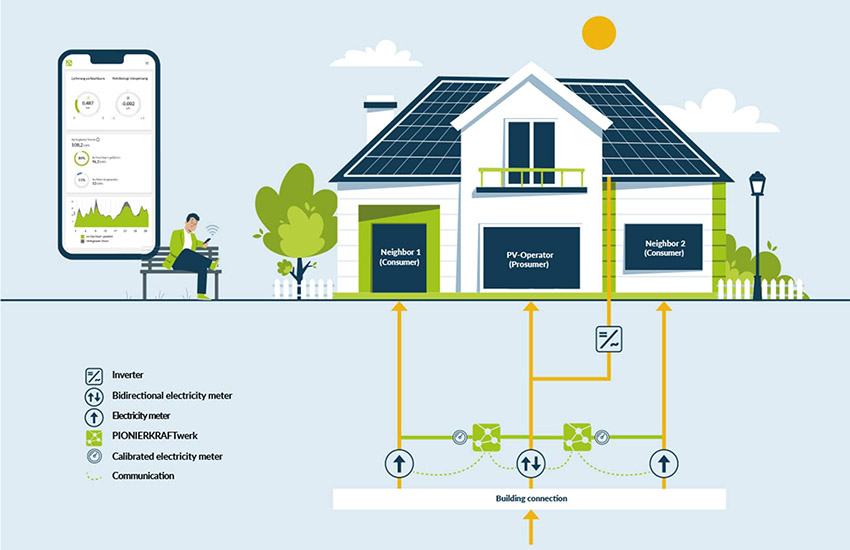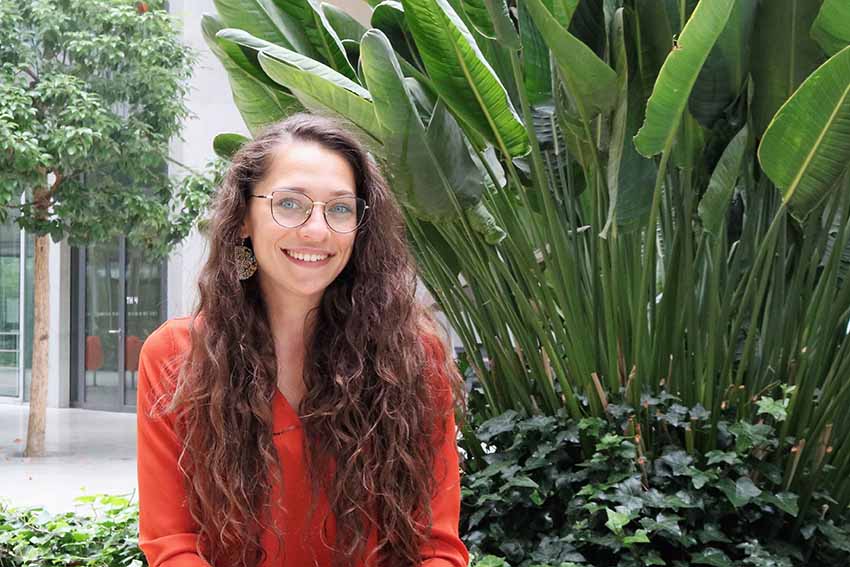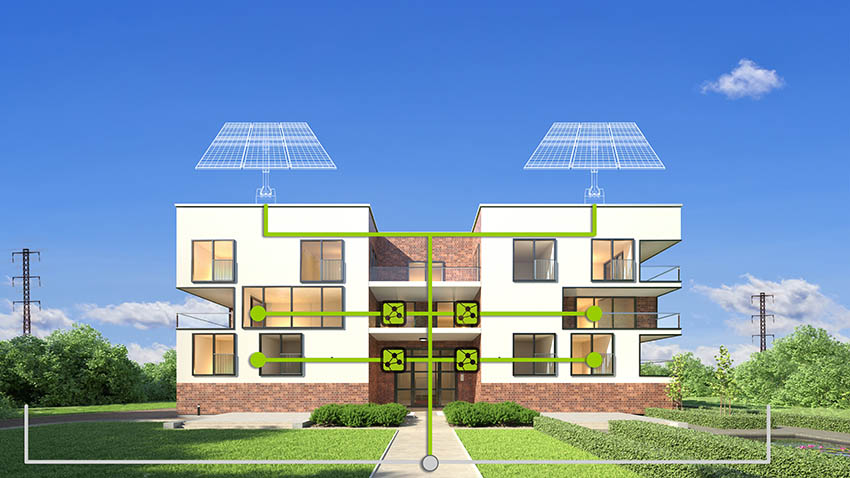PIONIERKRAFT is the first company offering a profitable solution for generating and sharing energy from renewable sources in multifamily buildings up to ten units.
With their innovative product, PIONIERKRAFT makes it possible that self-generated energy can be shared locally and profitably with other people, from the first tenant on, offering an alternative to tenant electricity models in Germany which have remarkably high financial and administrative barriers for green energy sharing projects on small muti family buildings.
Since its founding in April 2019, the start-up, which was funded by the German Federal Ministry of Economics, has made significant progress, won numerous innovation awards and is thus one of the most successful German start-ups in 2020. Co-founder Andreas Eberhardt was recognized as one of the most successful young entrepreneurs in the Forbes 30 Under 30 ranking in 2021 for the positive development of the company and his vision “to provide all people with affordable and clean energy.”
Following successful pilot projects in Allgäu, Lower Bavaria and Bavarian Swabia, PIONIERKRAFT projects have been implemented at customers’ sites throughout Germany since November 2021. In March 2022, the latest generation of hardware – the PIONIERKRAFTwerk 2.0 was successfully CR certified, and production started, so that the first power plants of this generation will be delivered to customers in summer 2022.
Interview with Adna Grozdanic, Marketing Manager at PIONIERKRAFT.
Easy Engineering: What are the main areas of activity of the company?
Adna Grozdanic: The main areas of activity of the company are (1) Hardware and Software Development (2), Photovoltaic Project Management (3), Product sales and (3) 360 ° Energy Sharing Customer Service

E.E: What’s the news about new products?
A.G: The first generation of our energy sharing technology can share energy between separate buildings. The second generation is not only suited for separate buildings but also for multi-party apartment buildings, expanding the potential market significantly. It was CE certified in March 2022 and is now available for pre-order.
E.E: What are the ranges of products?
A.G: Owners of small buildings lack a cost effective and simple to roll out tenant electricity solution. Tenants lack a dependable, environmentally friendly, and financially feasible power supply. Our products and services deliver the perfect solution for these problems. We not only supply solar panels and our energy sharing solution but also plan and implement the installation and furthermore service green energy projects on an ongoing basis via our service-platform – which means you can rely on us for all your photovoltaic needs, from the planning to the annual accounting.
Another core area besides the photovoltaic tenant electricity planning in small multifamily homes is the sales of our energy sharing solution – the PIONIERKRAFTwerk. The PIONIERKRAFTwerk is a combination of software and hardware that distributes self-generated energy according to energy demand. It intelligently controls the flow of energy between the photovoltaic system and the households to be supplied. Accordingly, the electricity purchase from the grid is reduced and the self-generated electricity from the green energy system supplied instead. The main area of activity in this context relates to the sales of the PIONIERKRAFTwerk to current or future owners of green energy generation plants, as our solution is compatible with e.g., hydroelectric power plants, micro wind turbines or bioenergy, to name a few.

E.E: At what stage is the market where you are currently active?
A.G: The market stage in this context is difficult to define. We operate in the (Sustainable) Energy Market. Due to the increased demand for renewable energies in Germany, this market is getting more and more saturated. There are approximately six million residential buildings with thirty-two million households in Germany that would in principle be suitable for an exchange of energy between neighbors. Due to recent Political/Social/Economic events the demand for green energy increased again significantly, also increasing the gap for photovoltaic energy. However, the regulatory framework for tenant electricity on small multifamily buildings is complicated and there are hardly any available technical solutions that could help to supply those households with renewable energy easily and economically. This results in a tenant-electricity implementation rate for small buildings to be less than 1%. As our innovative technology & business model offer a cost-efficient and easy alternative to tenant electricity for small buildings for the first time, it can be discussed that the market is just emerging for this huge market segment. Therefore, the sharing economy approach to the energy market belongs to the Pioneering phase.
E.E: What can you tell us about market trends?
A.G: The solar industry has experienced strong growth in recent years and is now on the verge of a boom. This is due to the steadily falling cost of solar modules, the increasing awareness of environmental sustainability and the steadily increasing prices for conventional energy. Energy costs are rising more than ever leading people to increasingly seek alternatives to conventional energy supply. Citizen energy and energy sharing are one example. The electricity tariffs of basic suppliers in Germany increased 58% compared to 2021 and the exchange electricity price went up to more than 490%. Further increases are expected due to Russia’s invasion of Ukraine and increased demand for fossil energies
Another important trend is the incentivization and reduction of barriers, hurdles and to green citizen energy. EU Countries increasingly promote the expansion of renewable energies with nationwide legislative adjustments (e.g., EEG amendment in Germany; 1.3b € promotion of PV, storage and installation in Spain).

E.E: What are the most innovative products marketed?
A.G: The expansion of the solar sector is progressing steadily, and land conflicts are one of the results of it as energy production ideally needs to be close to the consumption areas. This especially creates a problem for cities as especially there, space is scarce. For this reason, innovative ground-mounted systems with dual benefits are becoming more and more important. Floating PV Systems, Agricultural PV Systems and PV Covered Highways are few examples of innovative approaches to this problem. Our approach also conveys to the solution to energy transition as energy is produced locally and scaled by means of economy of sharing.
E.E: What estimations do you have for 2022?
A.G: We want to become the market leader in the area of small MFH and accelerate the expansion of PV on roofs, which is crucial for the energy transition.

